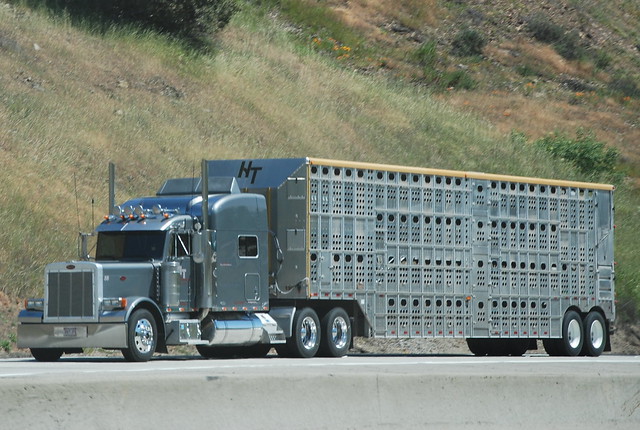A familiar sight on Montana’s
highways in the fall is the “Pot” – a possum-bellied double deck semi-trailer
hauling cattle. Also known as a
“bull-rig”, there are thousands of them scattered around each of the Western
States – and all of them are busy in the fall.
Most ranches in the inter-mountain
West are termed cow/calf operations: a
herd of cows is maintained year-around; they calve in what is loosely called
“spring”; the calves run all summer gaining weight on grass; and the calves are
sold in the fall to the big feedlots in the Midwest, where they are fattened to
supply the meat section of your grocery store.
A calf with a birthweight of 70
pounds spends all summer with his mother – both of them eating grass. The calf nurses at his pleasure, and gains as
much as 3 pounds per day on this rich, natural & organic, environmentally
correct, and sustainable diet. By fall
he weighs over 600 pounds, and is ready to leave the nest and move on to the
next phase of his life – a feedlot where he fattens on a ration of hay, straw,
silage, and some grain. This calf gained
some 600 pounds in the first 6 months of his life, and will gain another 600
pounds in the feedlot – mostly on materials that are not digestible by humans.
Everyone is familiar with the
“cattle drive” as depicted in such TV series as “Rawhide” and “Lonesome
Dove”. In fact, trailing cattle was once
the only way to move them to summer range or to a shipping point. But just as ATVs are rapidly replacing horses
in gathering the cattle, semis and gooseneck stock trailers have mostly
replaced the trailing of cattle.
In the fall, these bull-rigs can be
seen everywhere. Cows are hauled home
from summer range, and calves are hauled to market. Trailers of all sizes haul calves in from the
ranch to a sorting-yard where they are weighed and sold, and another set of
semis is waiting to haul them to the feedlots of the Midwest. The regional livestock auctions are swarming
with trucks of all descriptions as cattle come in from the ranch, and move on
into the food chain.
And thus another year in the cycle
of ranching is completed.

